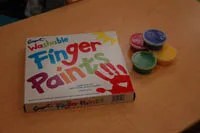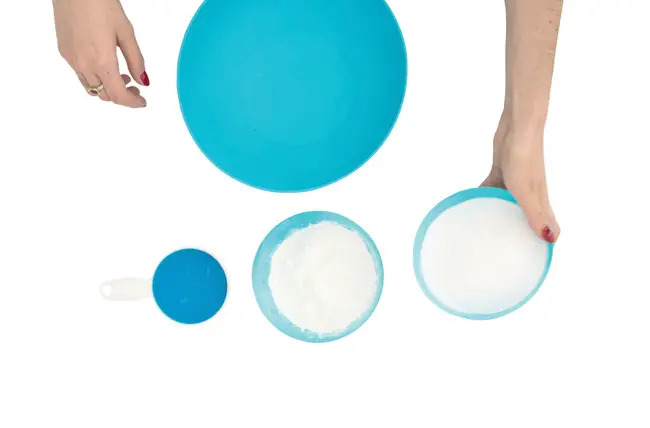Finger painting — it’s messy, it’s creative, and it’s great fun. But it may be dangerous!
Children love to finger paint; they go at it with great abandon, dipping their fingers into the soft, mushy paint and spreading it all over the paper and themselves as well. They end up with paint on their faces and fingers that can accidentally get into their mouths.

Worried? Here are some tips to keep your kids safe.
• Read product labels closely. Labels are a treasure trove of important information. They will tell you whether the product is non-toxic and safe for use or needs special handling to avoid possible health hazards from misuse. Start by looking for the Approved Product Seal from the Art and Creative Materials Institute (ACMI). Few consumers are aware of this seal’s existence, yet it is one of the most important indications that a product, whether manufactured here or abroad, is safe for children’s use. At the ACMI, products undergo a stringent toxicology evaluation by a professional toxicologist. The ACMI also evaluates products for each ingredient’s possible interaction with other ingredients, potential harm to any part of the body and possible allergic reactions. The label will often have the words “non-toxic” on it, but the seal is further proof that is has been tested for toxicity.
• Shop smart at the store. Many manufacturers are doing more at the store level to indicate that their products are safe for kids. Not all brands carry both the non-toxic wording and the Approved Product Seal. You want as much safety reassurance as possible, particularly when children are finger painting. Select products that are appropriate for the age of your child and keep products with cautionary labels out of the reach of children.
• Use common sense. Don’t let your children paint on their own. Provide appropriate supervision when they are using materials that can easily be ingested. Also, remember that is not safe to eat or drink while using any kind of art and craft materials. This is particularly true of finger paints.
• Join the clean-up brigade. Scrub those little hands and faces (your own hands while you’re at it), art supplies and the table (it’s a wonder how any paint ends up on a child’s creative masterpiece, as so much of it covers the surface of the table). Use a bathroom or utility room sink that is not used for food preparation.

• Never use any type of paints (including finger paints) for skin painting, unless the package states clearly that it is intended for that purpose, as it could cause skin irritation. Again, keep products with cautionary labels out of the reach of children.
Has your paint seen better days? It can become contaminated with bacteria or mold, which can cause a strong, offensive, and in some cases, sickening odor. To store paint safely and use if for as long as possible:
• Store art materials in the original packaging; it includes important information about ingredients and safety.
• Mark the date of purchase on all containers, and use the oldest supplies first.
• Thoroughly shake the paint before using. (Make sure the lid is secure!)
• Remove only the amount of finger paint you will need for that day’s activity. Discard any unused paint by rinsing it down a drain (away from your food preparation area) or sealing it in a container and putting it in a garbage can or dumpster outside the building. Do not return the unused portions to the original container – they may be spoiled and will contaminate the remaining paint.
• If you dilute the paint, do not save or reuse it. Water can dilute preservatives in the paint that guard against bacteria and mold.
• Avoid working directly from the original product containers – open them, take what you need, and seal them again. Egg carton sections, yogurt containers, disposable drinking cups, and other items can be cleaned to hold paint during art and craft making.
• Do not place brushes, hands, or other objects in the container, as this can cause contamination.
Provided by from Sargent Art, an American company that has been making safe paint for children for over 75 years. www.sargentart.com.





















